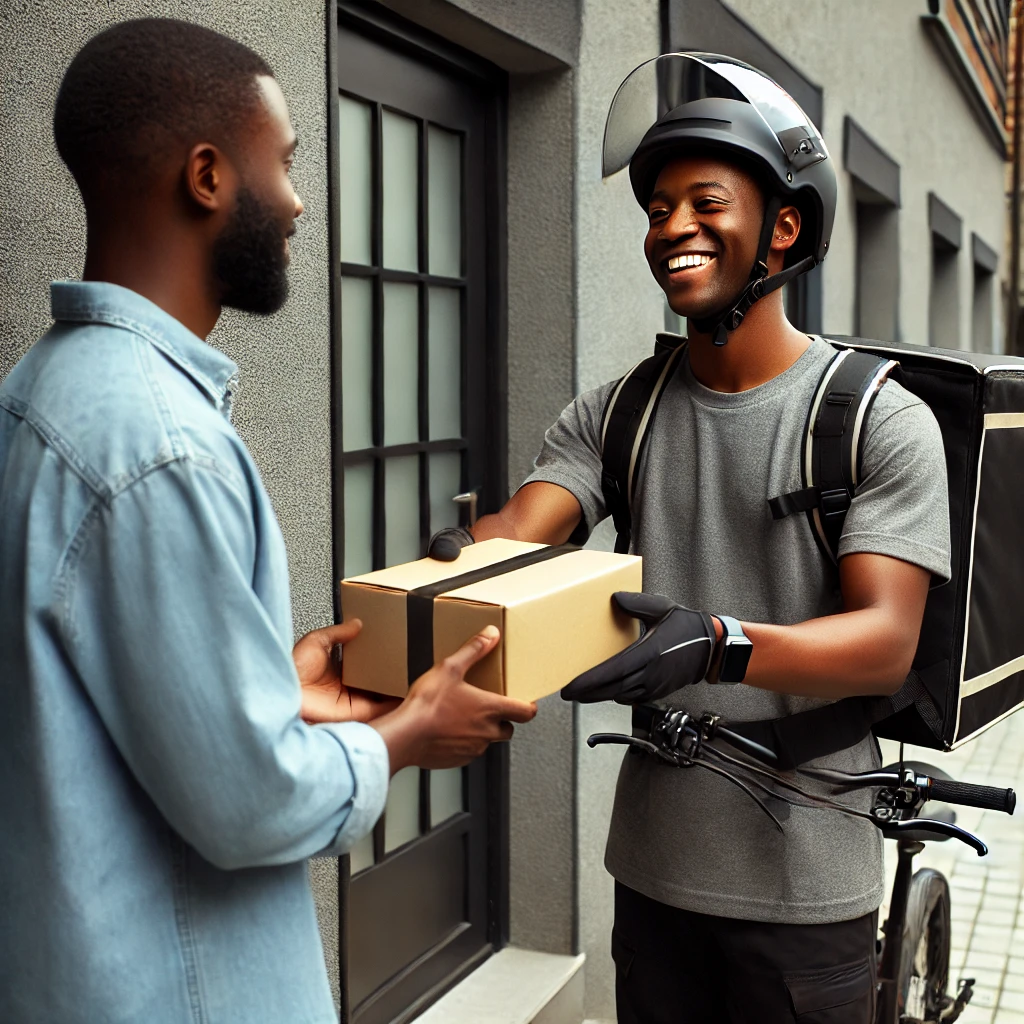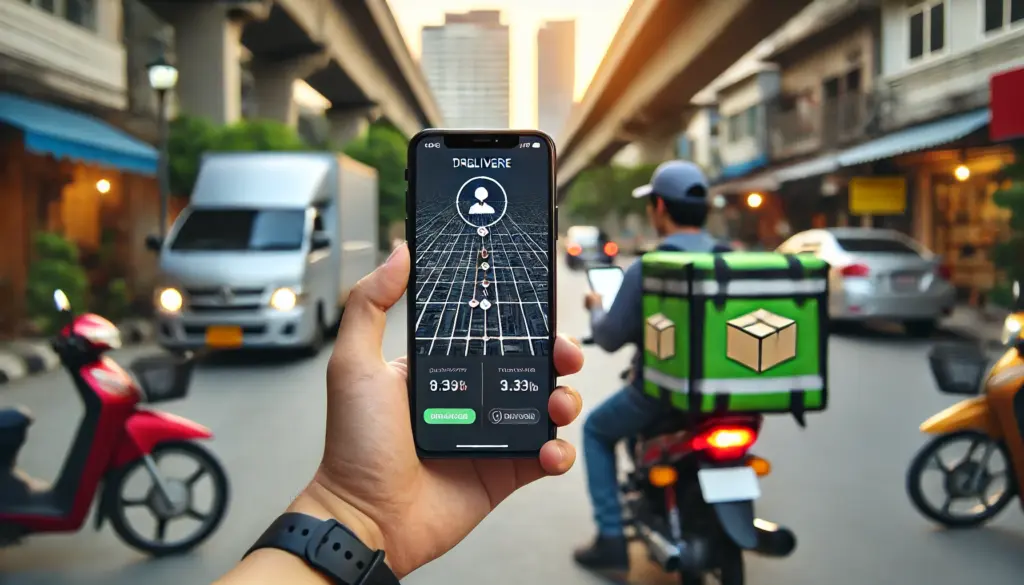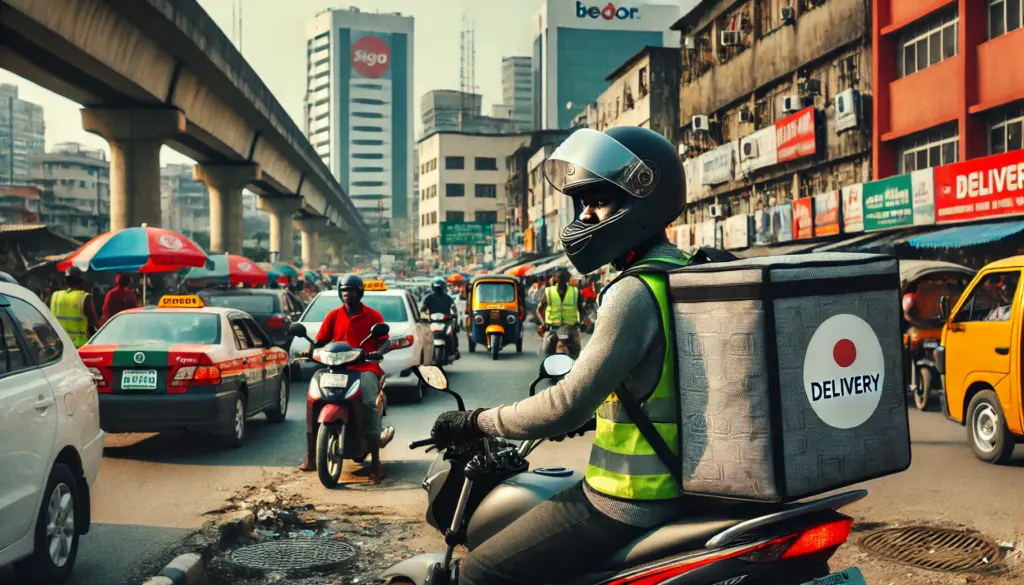Physical Address
304 North Cardinal St.
Dorchester Center, MA 02124
Physical Address
304 North Cardinal St.
Dorchester Center, MA 02124
Every delayed delivery costs you more than just time; it chips away at your reputation. In Nigeria’s fast-growing logistics industry, where customers expect speed and reliability, poorly trained delivery riders can mean lost business.
Think about it.
A rude rider, a mishandled package, or a simple navigation mistake can turn a loyal customer into a competitor’s win. But here’s the good news: with the right training, your riders can become efficiency machines; delivering faster, handling customers better, and making your operations smoother.
I’ve seen logistics businesses struggle with rider-related issues; missed deliveries, poor communication, and even safety risks. Most of these problems aren’t just bad luck; they stem from a lack of proper training. That’s why in this guide, I’ll walk you through the essential steps to turn your riders into reliable, professional, and efficient delivery pros.
If you want to keep customers happy, cut down on delivery mistakes, and grow your logistics business, let’s dive in.
Logistics in Nigeria is booming, but so are customer complaints. Late deliveries, damaged packages, and poor rider behavior are some of the top reasons businesses lose clients. In a market where competition is fierce, one bad experience can send a customer straight to your competitor.
A study by PwC found that 73% of consumers say a good delivery experience is a key factor in their purchasing decisions. But here’s the catch—most delivery businesses focus on getting more riders instead of training the ones they have. Without proper training, even the best delivery management software can’t fix human errors.
Let’s break down the key problems logistics businesses face due to untrained riders:
Training your riders isn’t just about making them faster—it’s about making them reliable. When you invest in structured rider training, you reduce customer complaints, increase delivery speed, and improve retention rates. More importantly, a well-trained team means fewer headaches for you.
In the next sections, we’ll cover exactly how to train your delivery riders to be professional, efficient, and customer-focused. Let’s start with the foundation—customer service training.
Training your delivery riders isn’t a one-time event—it’s an ongoing process that shapes how they handle deliveries, interact with customers, and represent your business. Below are five essential areas where every logistics business should focus its rider training efforts.
A delivery rider is more than just a package transporter—they are the face of your business. One rude interaction or careless attitude can turn a first-time customer into a lost customer.

✅ Communication Skills – Teach them how to greet customers, confirm deliveries, and respond to questions politely. A smile (even over the phone) goes a long way.
✅ Problem-Solving – Equip them to handle issues like missing recipients, unclear addresses, or customer complaints without frustration.
✅ Professional Appearance – Even if they don’t wear a uniform, their dressing should be neat, and their attitude should be respectful.
A customer orders a package but isn’t home when the rider arrives. Instead of leaving or sounding irritated over the phone, a trained rider says:
“Good afternoon, ma. I’m your delivery rider from [Company Name]. I’m at your location, but I noticed you’re not around. Would you like me to wait a few minutes or drop it with a neighbor?”
This small adjustment can completely change how the customer feels about the service.
Great customer service isn’t difficult—it just requires consistency. When your riders handle customers professionally, they don’t just deliver packages; they deliver trust.

Technology is transforming the logistics industry, and if your riders don’t know how to use delivery software efficiently, they’ll slow down operations. Many logistics businesses in Nigeria still rely on phone calls and manual record-keeping, which leads to misplaced orders, delays, and frustrated customers.
A platform like Dora simplifies delivery tracking, rider assignment, and real-time updates. But software is only as good as the people using it. That’s why your riders need hands-on training to use these tools correctly.
✅ Logging In & Navigating the Dashboard – Show them how to check assigned deliveries, update order status, and view customer details.
✅ Marking Orders as Delivered – Riders should update order statuses immediately after completion to keep records accurate.
✅ Using GPS for Route Optimization – If your platform offers route suggestions, riders should know how to follow them for faster deliveries.
✅ Notifying Customers – Whether it’s an automated SMS or a quick call, keeping customers informed prevents misunderstandings.
A new rider is struggling to find a delivery location and keeps calling the dispatcher for directions. Instead of wasting time, he should know how to:
When riders are confident with the software, your business runs smoother. No more excuses like “I didn’t know where to go” or “I forgot to update the delivery status.”
Speeding through traffic, weaving between cars, and ignoring traffic rules might seem like ways to deliver faster, but they put your riders—and your business—at serious risk. In Nigeria, road accidents are one of the leading causes of death, and motorcycle riders account for a large percentage of these incidents.
A single accident can result in injury, damaged goods, legal issues, or even a loss of life. No delivery is worth that risk. That’s why road safety training is not optional—it’s a necessity.

✅ Traffic Rules & Regulations – Every rider should know Nigerian road signs, speed limits, and the importance of wearing helmets.
✅ Defensive Riding Techniques – Teach them how to anticipate other drivers’ mistakes and avoid dangerous situations.
✅ Emergency Handling – If an accident happens, riders should know basic first aid, emergency contacts, and insurance procedures.
✅ Vehicle Maintenance – A well-maintained bike reduces the risk of sudden breakdowns mid-delivery.
A delivery rider is rushing to complete an order and decides to beat a red light. He narrowly avoids a collision, but the customer calls to complain about reckless riding. This could have been avoided if he had been trained on safe but efficient riding techniques, such as:
A safe rider is a productive rider. Training your team on road safety not only protects their lives but also ensures they can keep working, delivering, and representing your brand professionally.
A well-planned route can be the difference between 10 successful deliveries and 5 delayed ones. In a city like Lagos, where traffic congestion is unpredictable, your riders need to know how to navigate efficiently. Without proper route planning, they waste fuel, time, and energy—ultimately costing your business money.
Some riders rely on personal knowledge of the roads, but that’s not always reliable. Instead, training them to use navigation tools and plan ahead will help them avoid unnecessary delays.
✅ Using Google Maps & GPS Tools – Riders should know how to check traffic updates and select the fastest routes.
✅ Following Delivery Priority – Teach them how to prioritize time-sensitive deliveries first.
✅ Avoiding High-Traffic Areas – Knowing which roads to avoid during peak hours can cut delivery times in half.
✅ Handling Multiple Stops Efficiently – Instead of moving randomly, riders should follow an optimized route that minimizes back-and-forth movement.
A rider has five deliveries in different parts of town. Instead of handling them in the order they were assigned, he should:
When your riders spend less time figuring out where to go, they complete more deliveries per shift—which means more revenue for your business.
A package that arrives late is frustrating. A package that arrives damaged is a disaster. Nothing hurts a logistics business more than customers receiving broken, wet, or mishandled goods. Worse still, refunds and replacements eat into your profits.
The good news? Most package damage is 100% preventable with proper rider training. If your delivery riders know how to load, secure, and handle items correctly, you can reduce complaints, minimize losses, and keep customers happy.
✅ Proper Loading Techniques – Heavier items go at the bottom, fragile items on top, and everything should be tightly secured.
✅ Handling Fragile Goods – Riders must be extra careful with glass, electronics, or food items, ensuring they stay upright and protected.
✅ Verifying Recipient Details – Before handing over a package, they should confirm the recipient’s name, phone number, and order details to avoid mix-ups.
✅ Proof of Delivery – Riders should always collect a signature, photo, or digital confirmation to prevent disputes.
A rider is delivering a cake, a smartphone, and a bag of groceries. If he simply throws everything into his delivery box without care, here’s what happens:
❌ The cake gets crushed.
❌ The phone box slides around and gets scratched.
❌ The groceries spill, damaging the food items.
Instead, with proper training, he would:
✅ Place the cake in a separate, stable compartment to prevent it from moving.
✅ Keep the smartphone in a padded section to avoid scratches.
✅ Secure the grocery bag upright to prevent spills.
By following simple handling rules, your riders can avoid unnecessary losses and keep customers satisfied.
Training your riders is only half the battle—keeping them on your team is just as important. High rider turnover is a major problem in Nigeria’s logistics industry. Many businesses train riders, only for them to leave after a few months, taking their skills elsewhere.
A revolving door of new, untrained riders means more delivery mistakes, lower efficiency, and constant recruitment costs. The solution? Make your business a place where riders want to stay.
✅ Offer Performance-Based Incentives – Reward top-performing riders with bonuses, extra pay, or recognition. Even small incentives can boost motivation.
✅ Ensure Fair and Timely Payment – Late salary payments push riders to leave. Paying them on time shows respect and reliability.
✅ Create a Positive Work Environment – Treat your riders well. A little respect and appreciation go a long way in keeping them loyal.
✅ Provide Career Growth Opportunities – Give riders a reason to stay by offering promotions, additional training, or the chance to move into leadership roles.
✅ Use Feedback to Improve Working Conditions – Ask your riders about their challenges and find ways to address them. Happy riders mean better service.
A logistics company notices that its best riders are leaving for competitors. Instead of accepting this as normal, the company introduces a rewards program where riders who complete 100+ successful deliveries per month get a bonus. The result? Riders become more committed, fewer riders quit, and deliveries improve.
By investing in your riders’ job satisfaction, you’re not just keeping employees—you’re building a team that grows with your business.
A logistics business is only as strong as its riders. Untrained, reckless, or unmotivated riders can cost you customers, money, and reputation. But when you invest in proper training, you create a team of professional, efficient, and customer-friendly riders who help your business grow.
Here’s a quick recap of what we covered:
✔ Customer service training ensures polite, professional interactions that build trust.
✔ Delivery software training helps riders use tools like Dora to streamline operations.
✔ Road safety training reduces accidents and keeps riders productive.
✔ Route planning techniques improve delivery speed and fuel efficiency.
✔ Package handling best practices prevent damage and customer complaints.
✔ Retention strategies keep your best riders loyal and motivated.
At the end of the day, trained riders are an investment, not an expense. They make deliveries smoother, customers happier, and your business more profitable.
If you’re serious about growing your logistics business in Nigeria, start by training and retaining a skilled delivery team. And if you need a smarter way to manage your riders, Dora’s fleet management tools can help you stay on top of every delivery, every time.